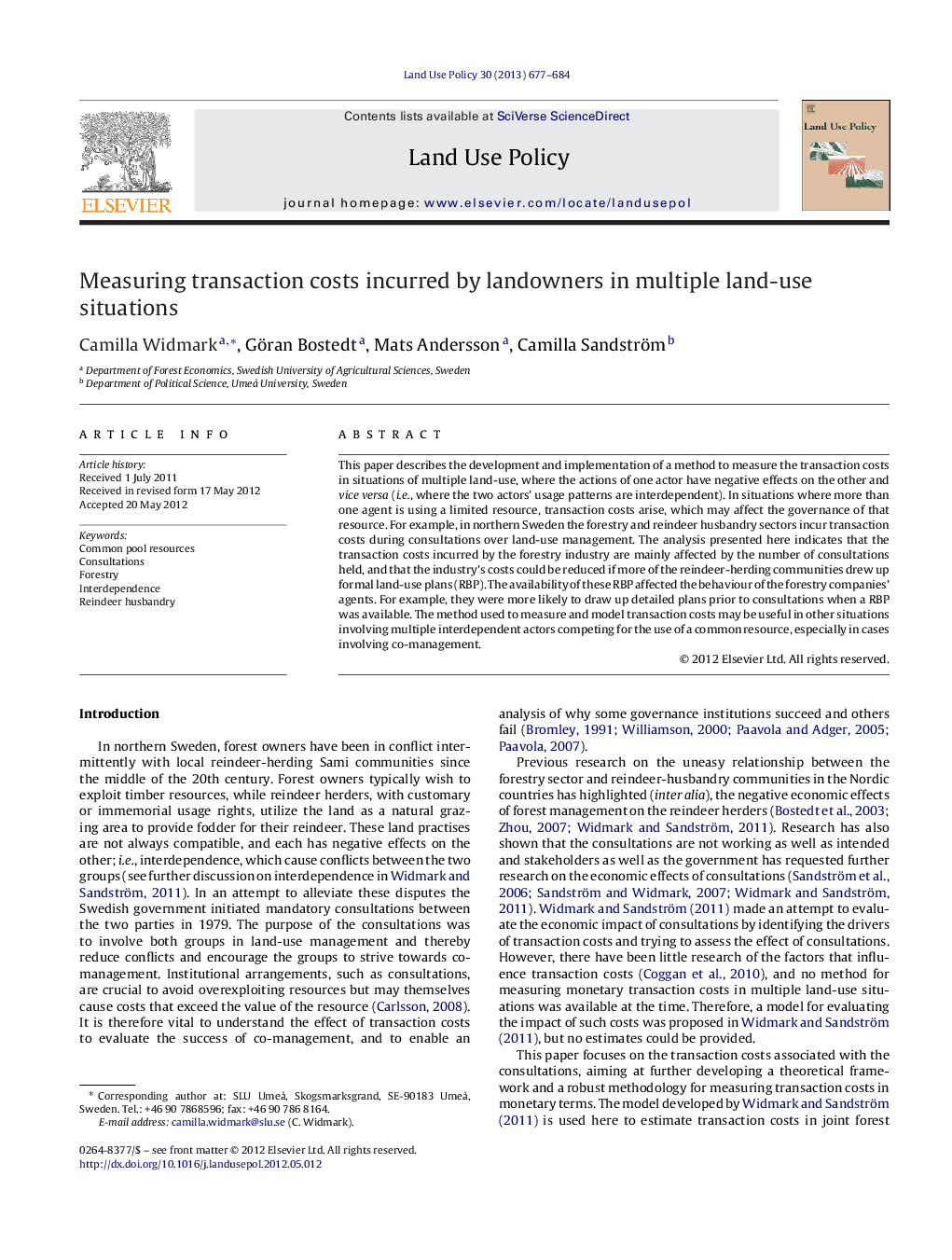| Article ID | Journal | Published Year | Pages | File Type |
|---|---|---|---|---|
| 93028 | Land Use Policy | 2013 | 8 Pages |
This paper describes the development and implementation of a method to measure the transaction costs in situations of multiple land-use, where the actions of one actor have negative effects on the other and vice versa (i.e., where the two actors’ usage patterns are interdependent). In situations where more than one agent is using a limited resource, transaction costs arise, which may affect the governance of that resource. For example, in northern Sweden the forestry and reindeer husbandry sectors incur transaction costs during consultations over land-use management. The analysis presented here indicates that the transaction costs incurred by the forestry industry are mainly affected by the number of consultations held, and that the industry's costs could be reduced if more of the reindeer-herding communities drew up formal land-use plans (RBP). The availability of these RBP affected the behaviour of the forestry companies’ agents. For example, they were more likely to draw up detailed plans prior to consultations when a RBP was available. The method used to measure and model transaction costs may be useful in other situations involving multiple interdependent actors competing for the use of a common resource, especially in cases involving co-management.
► We model transaction costs of joint land use with opposing objectives. ► Input of time into consultations is reflected in transaction costs. ► No economies of scale of number of consultations. ► Transaction costs per consultations decrease as reindeer herders have land use plans. ► Personal relationship and local knowledge are vital to achieve better consultations.
